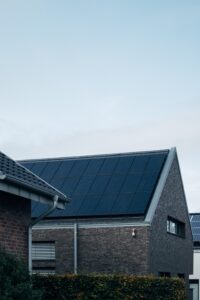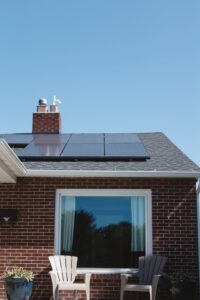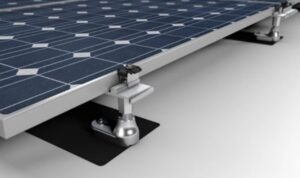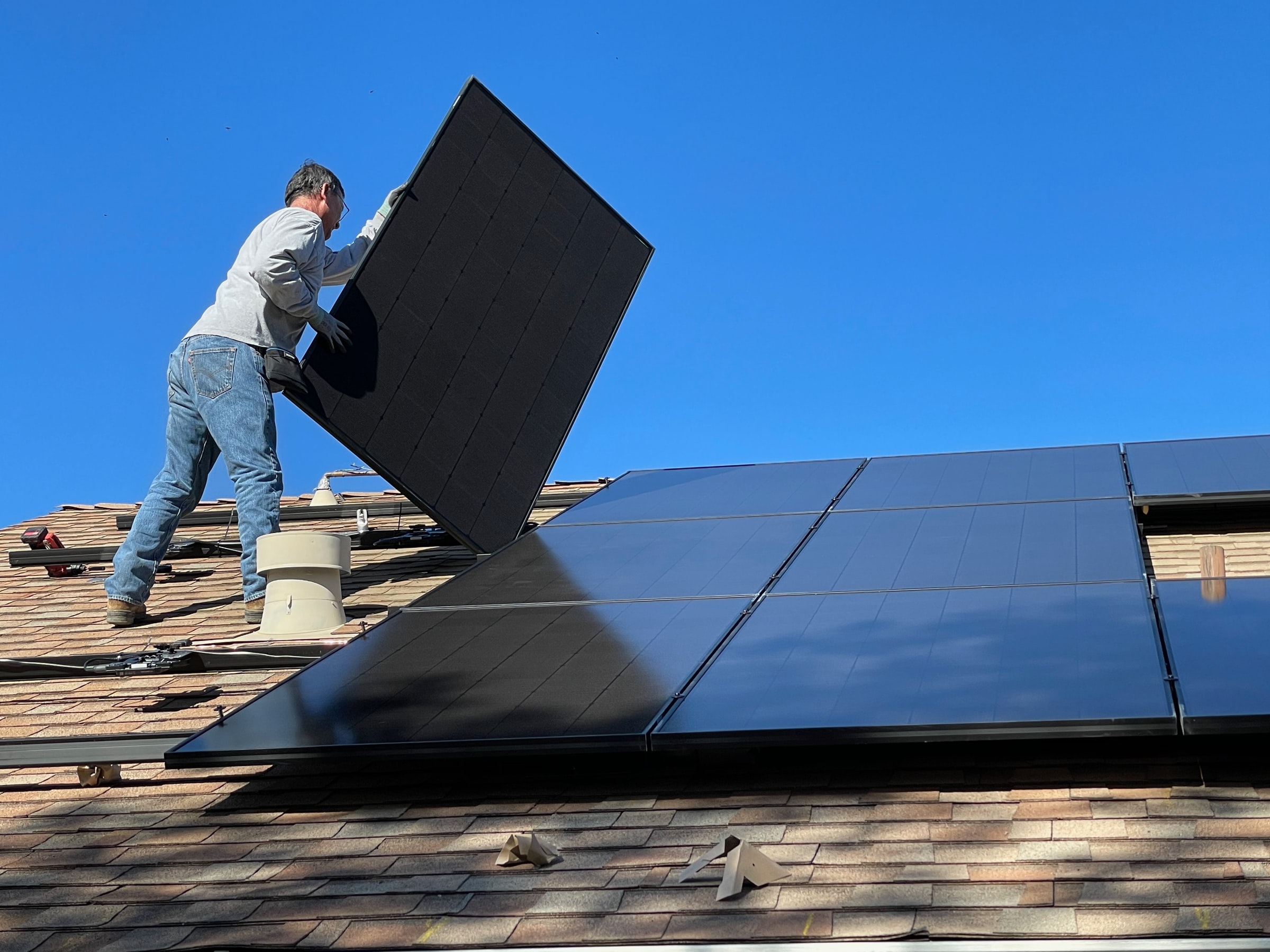Installing Solar Panels on Roof
Installation of solar panels can be a complex task to pursue, but people have readily started to experiment with it. Many people know what solar panels are, but most do not know the details that concern the setup of a solar panel on the rooftop.
Let’s put the first things first; this article will outline the different factors involved in installing.
A solar panel system and other steps to its installation. The best recommendation to you will be to hire a professional to get the job done.
We are targeting more information to you, so you are better equipped when you undertake a process of this size and complication. Read below to know more.
Different Solar Systems
Power can be generated easily at home while using solar panels. It is necessary to know the options for appropriately setting up the solar power system and enjoying its benefits. A contractor will tell you about the best options for you according to your home, so the decision-making process gets easier.
There are three types of solar panel systems:
Grid-connected (with no batteries)
This is the easiest and cheapest form of installation. This solar power comprises the system being connected to the grid containing no backups as the grid is being used in a battery. If there is more power requirement in your house, the primary consumption for these solar panels is from the grid according to the need.
When the system generates more electricity than the consumption, that power is automatically transferred to the grid, which is the local utility. The credit amount received for the access power depends on the consumption. There are certain things to be kept in mind before selecting this solar power if there is a grid outage, so power also disconnects at your house.
Grid-connected (no batteries)
The difference between this one and the previous one is that the batteries are also connected from the grid to the solar panels. It means that batteries will keep on storing the power, so when the grid has a power outage the battery, we’ll start running your house supply.
If the energy supplied by the solar power system is more than your consumption, then it will gradually shift to the grid. This is a pretty expensive system with many complications in the installment process. Therefore, this system is mainly always used in hospitals because of the specific needs of power supply.
Off-grid System
This system is not connected to the utility. It will generate, consume, and store its power without other resources’ help. The system’s installation is tricky because the exact amount of power requirement at your house will be needed for the contractor to install it. This system is primarily used in rural areas where the power costs from a utility are high. This system is not recommended for a populated place or a significant city.
Different Solar Panels
Before installing the work has begun by the contractor, you will need to pick the best solar panel for the roof. It is a better idea to know and understand your options before deciding one for yourself. In some instances, the contractor will think and choose the best one for you; however, it is better to know and understand the solar panels and your needs yourself before making the right decision.
There are different types of solar panels in the market; however, the most common ones are below.
Solar Photovoltaic Panels (PVs)
These are also known as crystalline silicon panels. The most common kind of solar panel technology on the market is solar photovoltaic panels, as they can generate energy with up to 20% efficiency. Since sure roofs do not have a lot of space over them, these panels are perfect and suitable for maximizing the amount of power generated.
Thin Panels
These solar panels are flexible and very thin compared to PV panels. However, they can only provide 6 to 11% of efficiency, so more panels I required to reach the level of efficiency desired for power delivery, especially when you are using them for commercial businesses.
Thermal Panels
While film and PV solar panels generate electricity, thermal panels usually heat water. They are specifically designed to transfer the heat instead of developing it. They are mainly used to offset the gas cost and are primarily found in commercial buildings.
Mounting Systems
Different mounting systems are used to install solar panels by contractors on a roof. The whole mounting procedure on your roof is different from that of your neighbors as it depends mainly on the shape and the size of your roof, along with the different textures and shingles found on it. Therefore, residential roofs are primarily mounted directly.
Direct mounting procedure
The acceptable way of installing solar panels on the roof of any house is the direct technique. Certain contractors think South facing roof, which is around 10 degrees plus or minus, is best for carrying out this installation. The tendency of tilt of the solar panel is also crucial, so they work efficiently during winters when there is a low sun height.
The only thing to notice is how the solar panels tilt, so it does not result in a lifting effect. It is necessary because the more the tilt, the more the wind will stick in your solar panels and result in ripping them off the roof.
What you need to know
Some basic steps are necessary for installing a solar panel on the roof. You need to keep in mind that these may differ from the roof you have in your house. It is always preferable to ask the contractors specific questions for the installation project. However, the main steps comprise of these:
- the mounts are placed 4 feet apart on the rafters
- holes are drilled into the rafters
- steel bolts are used to secure the mount and to seal the area surrounding it
- the solar panel should be fastened on the mount
- now connect the solar panel to the electricity supply
This should be remembered that although these steps sound easy, they might even cause permanent damage to the roof if not taken care of. But if you have been wondering about installing solar panels for a long time and want to shift to an eco-friendly lifestyle, then there is no better time than this one. There is a certain decrement in solar panels’ prices, so the solar PV systems are easily acquirable.
Therefore, now getting these solar panels for your house is more convenient and economical than before.
How to begin the process of Installing Solar Panels on Your Roof?
There are simple steps for installing a PV system on the rooftop. They are given below:
1. Weigh your options
Before selecting and installing the solar panels in your house, you need to remember a few points. First of all, is there adequate space for installing solar panels on the rooftop? If yes, then how much is it in feet or per square?
Secondly, is it the part of your roof where the sun shines brightly during the hours of daylight? Third, is the roof strong enough structurally to support these panels, and how much will they weigh? Moreover, how much area on your roof is covered mainly by shades?
Lastly, what type of solar panel is perfect for installing at your house, bifacial, PERC, Polycrystalline, monocrystalline, or thin-film?
2. Energy audit and load division
Now that you have decided upon your choices, the next target is to determine the electricity required when the solar plant has been installed at your house. You can calculate the measures through solar system capacity payback. For the solar system and the area requirement in the solar system.
Now put an estimate for the solar panel electricity needed in the house to be generated, which is done by an energy audit. These audits are helpful to reduce the energy bill without excessive use, predict the solar energy required by the system, and meet the necessary conditions for the loans, rebates, and tax credits.
Once you determine and calculate the solution that suits the rooftop solar design and its specifications, you can estimate the cost taken for the installation of solar panels in the house using the cost calculators available on the Internet. Make sure you are also considering the warranty, maintenance costs, and the life of that system.
3. Solar developer
Once you have decided on your budget, identify the solar company you can trust. Before selecting the one, we advise you to do proper research because it is a product for a lifetime, and you do not want to run here and there once you’ve bought it when it starts acting up. It is necessary to check the product warranties as well. There are certain trusted brands in every corner of the world. Check their reviews, and then pick your favorite.
4. Survey the site
Once you conduct a site survey, you will be able to know the best location for PV solar panels, the obstacles that might arise, for example, shading, the size of every central electrical panel in the house, perfect and suitable places to install all the electrical elements without chances of short circuits, condition of the rooftop if it is sound or not, and that is square feet arrangement of the area for positioning of the module.
The contractors will come to your house and take notes for the overall roof size, slope angle, vents and chimneys on the roof, orientation by the compass, roof thickness, trees, or other blockades around the property.
5. Time to get the proposal
Once the site survey is done, and the KWh consumption is taken out for the building, you will effectively evaluate and decide on a solar plant that fits the requirements economically and technically.
6. Get permits and documentation done
If you make any financial move, there is documentation that comes along with it. Rooftop solar panels will require the same. If you are getting on grid networks, you will need gross or net metering permits.
Commonly, every permit differs from the state and the place you live and the scale and the form of the solar panels. Regardless of the situation comma, it is still better to know the details that might revolve around it.
7. Maintenance and warranty
Commonly the solar panels for house usage come with a 25-year warranty. Ten years are offered for 90%, and 15 years are added for 80% performance. Inverters are usually given a 5-year warranty there can be extended through the AMC if needed.
A solar plant does not need a lot of upkeep, but certain factors should be taken care of. If you want an efficient generation with no loopholes, you will have to clean the PV panels. Gradual cleaning of these modules every once in 15 days with a wiper or a wet cloth is perfect two generate the best performance.
So, when you are ready with the installation steps of a PV system, the whole process begins to fall in front of your eyes and gets a lot easier than you can imagine. The installation is not that hard, nor is the cost. It is only a matter of time and appropriate research.
Showdown
If you have come close to solar powers, you might know the importance of solar electricity for national security, the air we breathe, the environment, and your electricity bill.
Solar panels are the best to reduce your overall household consumption of electricity and decrease its effect on global warming. You must also know that you will be paying much less for the utility p
It is true in most cases. However, incremental savings take their time to overtake the first investment you make for solar panels; after that, all the solar power you get is free. And if you are installing these solar panels yourself, the tipping point will reach much sooner than you can imagine, maybe in half the time.
So, can you install these solar panels at your house? Then again, the answer is affirmative. If you can drive the lag bolts, spend a day or two, and assemble the prefabricated parts, a solar panel is not a hard thing to install.
The electricity business is not hard to guess. However, you can still hire an electrician to hook up the panels to the utility grid or the household electricity. The utility company can take care of it for free. But if you’re going for an off-grid system, the utility company is not in the circle.
Also, this job does not require a tedious number of tools to be in your pockets; you will only need a drill which you can also get on rent. So, if this project is that easy to do, why are there professional installers? Many people have valid reasons for hiring different people for anything, even grocery shopping or oil changing.
Therefore, this job can be done at home or by professionals both. The solar professionals are taking care of the installation. Still, they are also applying for rebates, designing the system, obtaining the permits, ordering the necessary parts, and passing the inspections correctly.
But it is factual to state that all these things can be done by yourself if you have a good advisor and follow the rules accurately, along with getting the permits from the proper authorities. It’s the ideal opportunity for the litmus test that lets you know whether to continue intensely as a beginner sun-powered installer or to give up the reins to an expert.
For the vast majority of you, the choice will boil down to the principles of the neighborhood building authority (in all likelihood your city, province, municipality, or state) or your utility supplier, both of which might expect these to be finished by an authorized proficient. This is additionally the best chance to affirm that your task will not be nixed by your drafting office, recorded region norms, or your property holder’s affiliation.
However, to say upfront, Installing solar panels on a roof is not up to a process that will be helpful if you start cutting corners. We don’t want you to get into trouble by installing without a permit or hiring the wrong people to make the final touches on the solar panel. Yes, the permit process is a pain, but it will also depict the safety of the system and the knowledge an official can give you according to the state you live in, or the area requirements will be of good use.






It is very valuable information
You are not right.